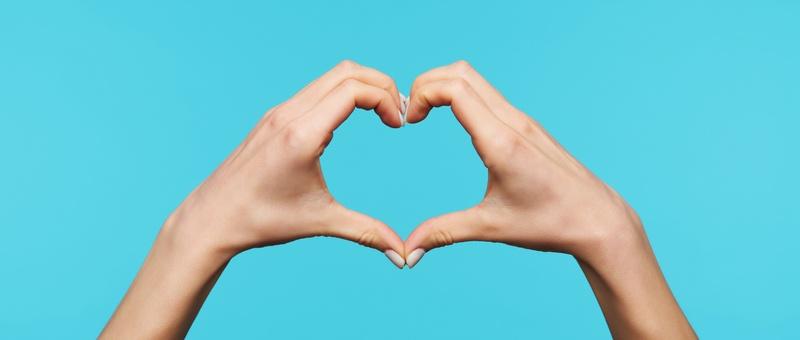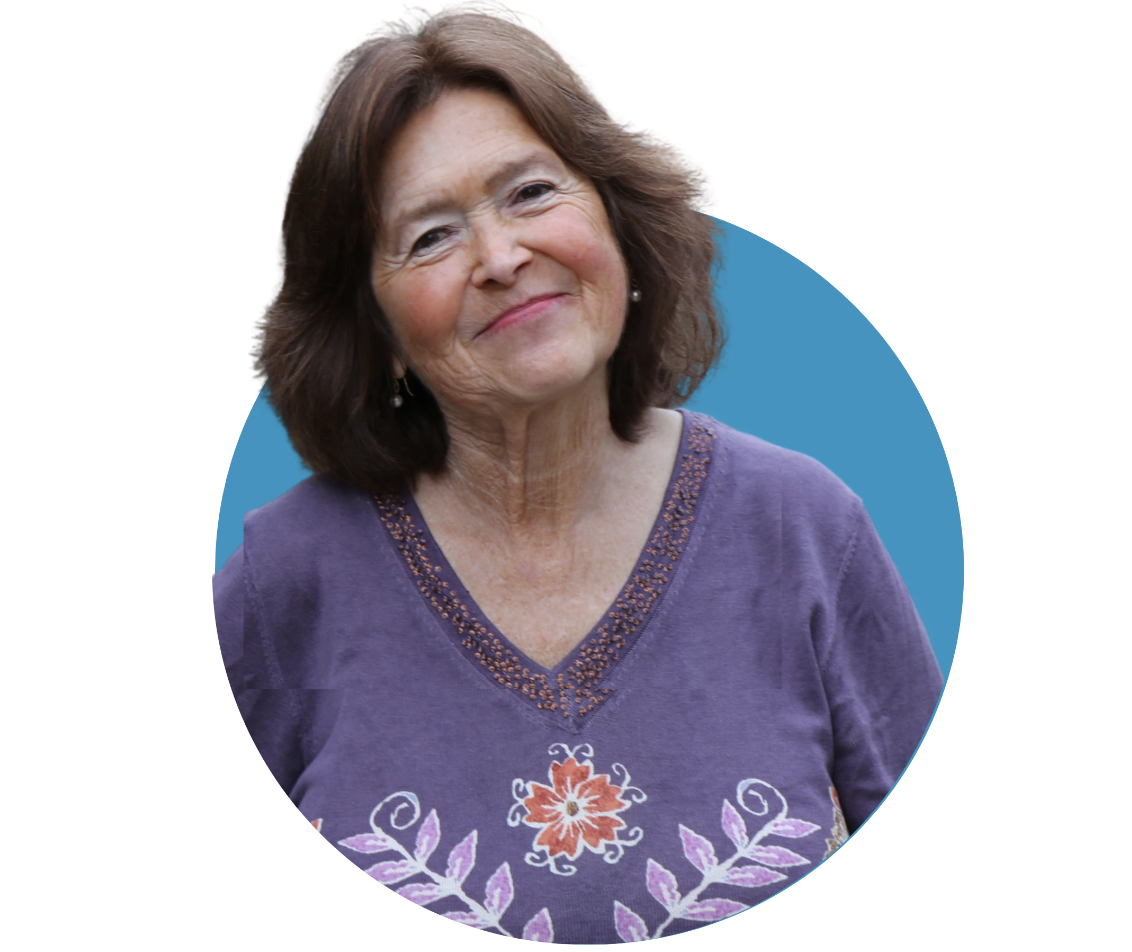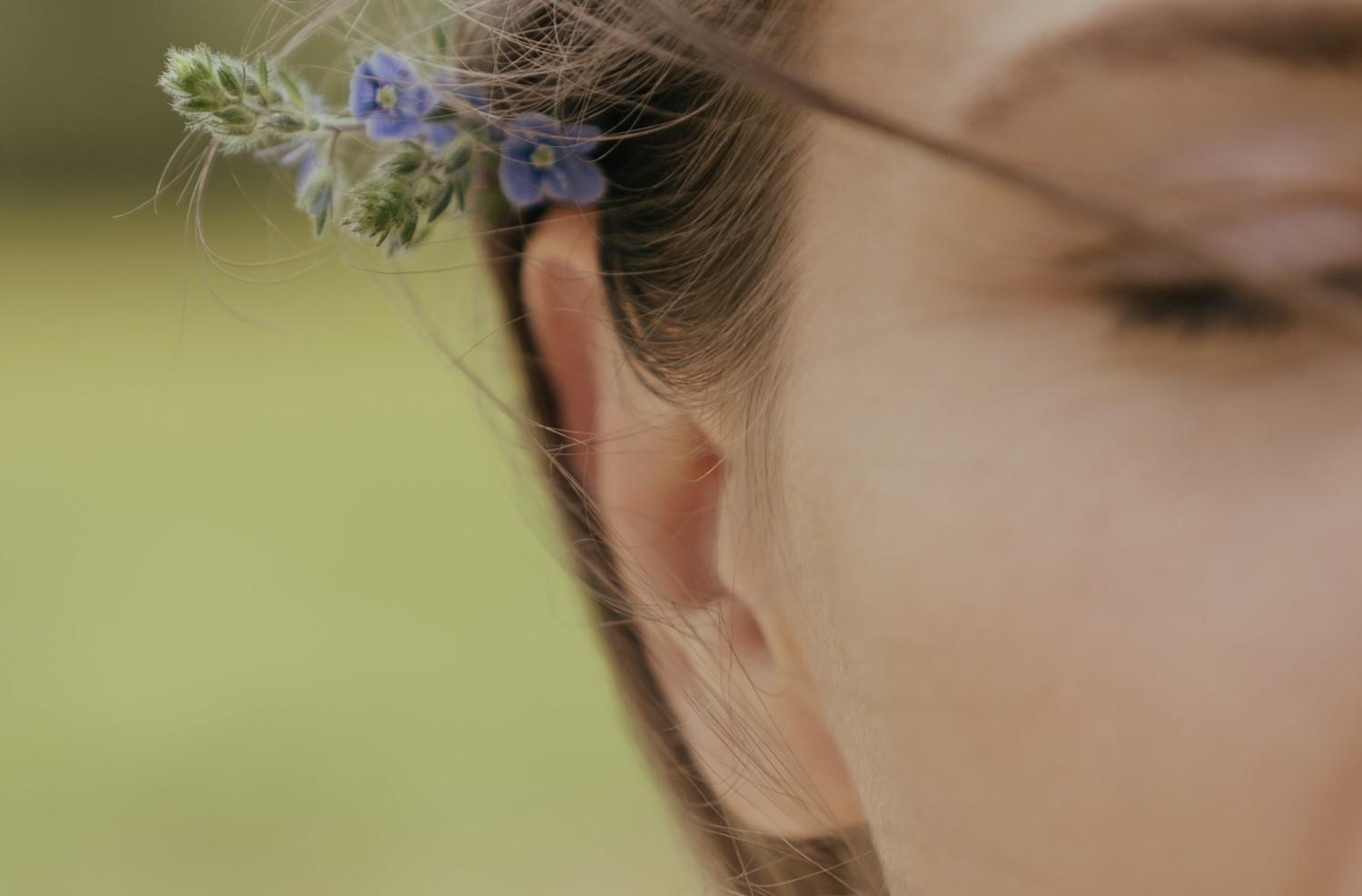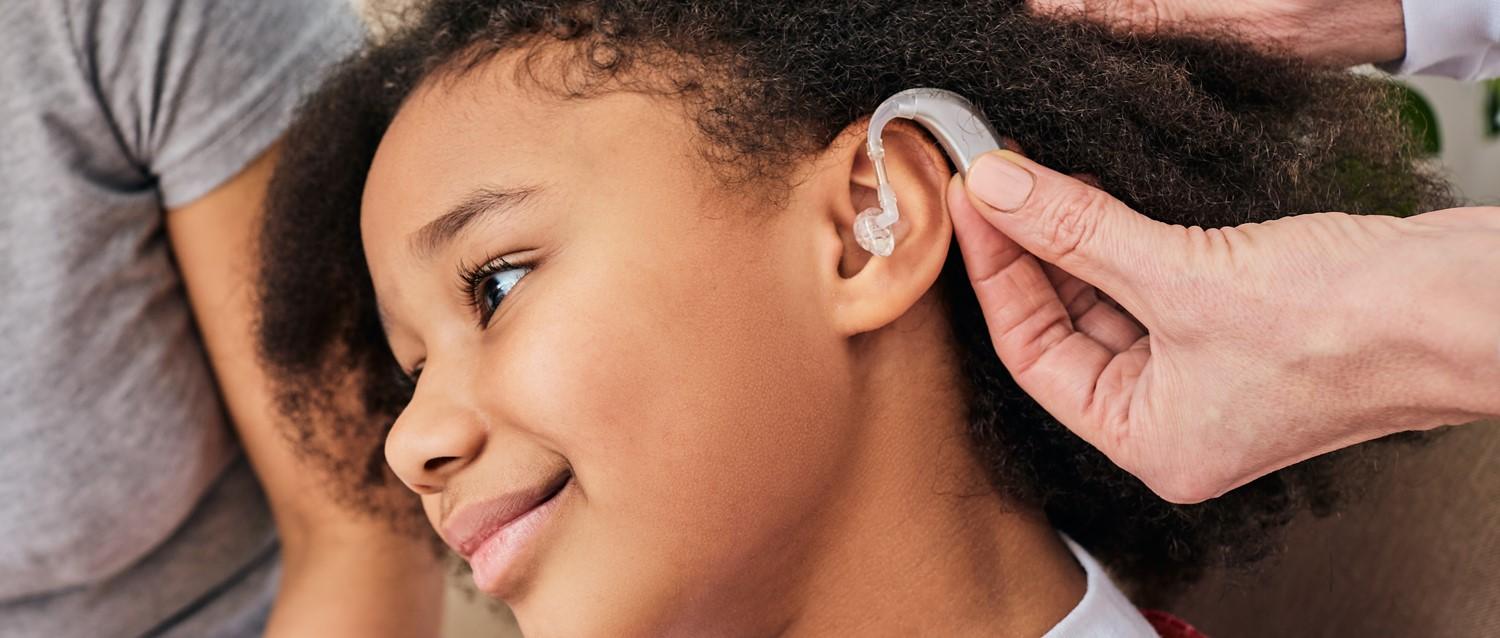
How I found my Deaf identity - Rachel's story
Peer reviewed by Dr Colin Tidy, MRCGPLast updated by Victoria RawLast updated 17 Sept 2025
Meets Patient’s editorial guidelines
- DownloadDownload
- Share
- Language
- Discussion
Rachel Zemach wants you to know that she's proudly, culturally Deaf with a capital 'D' - and that your children can be too. Despite losing her hearing aged 10, decades would pass before she felt able to express this with confidence. In writing, we speak with Rachel about her journey from deaf to culturally Deaf, and how teaching Deaf children changed her life forever.
In this article:
"I sometimes wonder how other people find their tribe, their career and passion, without a thump on the head to guide them." - Rachel Zemach, The Butterfly Cage.
Rachel Zemach has one foot in the hearing world and one in the Deaf world. Her family can all hear - husband Ramon signing poorly enough to call her his hamburger instead of his wife. They share their lives through lipreading and SimCom - using sign language with speech - in Novato, California. Rachel also has two grown-up daughters - and a cat, called Puppy, because identity crises aren't just for humans.
Rachel wrote The Butterfly Cage in 2023, a memoir that explores Deaf identity through the lens of her 13-year teaching career and the Deaf students who touched her heart.
We use capitalised Deaf here to refer to everyone who doesn't have full hearing, just as Rachel chooses to in her memoir. Except for when Rachel explains the difference between Deaf, deaf and hard of hearing.
Continue reading below
Rachel's story
Rachel spent half her childhood hearing, and the other half Deaf, following an accident involving a staircase game at age 10. Just two weeks before, a routine school hearing test had discovered she was already Deaf in one ear. It was the other ear that was damaged in the accident, making Rachel suddenly, completely Deaf.
Lipreading and using a hearing aid, she attended many mainstream or "hearing" schools. These years involved missed fire alarms, poor grades, and understanding little of what her teachers said. At age 14, Rachel attended the California School for the Deaf, where she discovered the expressive, cinematic language of American Sign Language (ASL). In her memoir, she describes this as a remarkable year, "not unlike Alice tumbling into Wonderland".
Yet, lipreading, using a hearing aid, and marrying a hearing man who doesn't sign - she feels she remained culturally "hearing" for many years.
"It can make for a lonely feeling if one is not clearly comfortable in either world."

Deaf, deaf, or hard of hearing?
In her memoir, Rachel describes avoiding the sign-in sheet at the Deaf community centre, where you had to tick if you were A) Deaf, B) deaf, or C) Hard of hearing. I ask her about this, and Rachel writes back: “The angst I felt about choosing an identity was an outward reflection of inner turmoil at not belonging comfortably to either group."
"People who identify as Deaf usually have strong connections in the Deaf community. They have a lot of access to support and friendship this way, and easy communication, but the community can be hard for others to break into," the author explains.
"The lowercase d in a deaf identity suggests a person is not feeling connected to the Deaf world. And hard of hearing is another complicated label. It seems more accepted these days, but again it is a word that distances one from a proud, Deaf identity. All these issues had been played out in various times in my life, often in painful and rejecting ways."
Rachel used to call herself an inbetweener, her word for hard of hearing people who have one foot in the hearing world. In her experience, these people are often more confused: "communication difficulties are constant and sometimes demoralising. I had hearing language skills and culture, but suddenly I was very deaf. It can make for a lonely feeling if one is not clearly comfortable and getting easy, full access/acceptance in either world."
It would be teaching that changed everything for Rachel, who now has a very positive and proud Deaf identity.
Continue reading below
Meeting my language-hungry students
According to the World Health Organization (WHO), just 2% of Deaf children worldwide have access to education through sign language. In the UK around 85% of Deaf children are taught in hearing schools and in the US it's 77%.
In 2003, Rachel became the Deaf teacher for a handful of these children at a local primary school. She soon discovered that their previous teachers either hadn't signed or had used combination of speech and Signing Exact English (SEE). SEE isn't a language in the same way that ASL or British Sign Language (BSL) is, but a system that attempts to duplicate spoken English. For Rachel, teaching would confirm that children born Deaf, with no prior reference for spoken English, needed a strongly visual, 3-D and meaning-based language.
She recalls: "My students were smart but could not answer even very simple questions, nor communicate simple things, because they had not yet been given access to a language that worked for them."
What would shock her is just how hungry for language her class was. In The Butterfly Cage, Rachel shares many happy memories of her first class - their beaming faces and eagerness when they discovered ASL words such as "faster" and "blood".
Language is the ultimate gift
In Rachel's journey from deaf to proudly Deaf, witnessing the way that language deprivation affected her students emotionally, and in their education, was pivotal. Children used their fists in place of words - mandatory maths tests had inaccessible reading levels.
"Language deprivation is a huge problem," explains the teacher. "It results from parents not learning the sign language of their country - BSL or ASL, or whichever that country uses. Parents are told not to learn to sign by specialists who believe it will detract from Deaf kids learning to speak and use hearing devices.
"However, the research shows the opposite - that it helps them. Super importantly, it helps their brains develop because they have full and real access to language visually at the time, age 0-5, when the human brain needs meaningful language.
"70% of Deaf kids are linguistically delayed, failing to meet the language milestones their hearing peers are held to. When I was teaching, it was not 75% but 95% of my students. ASL changed that very quickly, and they soared, but few can ever truly catch up."
Meeting Max
Rachel brought some of her students along to a literacy camp run by the Deaf community. She read a story in ASL to her own students and five younger kids. One of these kids was six-year-old Max, who stunned both Rachel and her students with a stream of highly inquisitive and insightful mediations at the end. The difference was that Max was born into a multi-generational Deaf family.
Remembering how her own students were confused by him, she says: "their level of fluency in ASL was light-years behind his, because his family signed from the day he was born. Max was much younger than them but had a much more developed brain."
Continue reading below
I want to understand everything, not just some things
In her years teaching in a hearing school, Rachel experienced push-back against the use of sign language. There's an idea that learning sign language will divert a Deaf person from learning to speak. In truth, some may hear enough to attempt speech - others never will.
One student, Daniella, composed a letter expressing her desire to move to the Deaf school, writing: “I want to understand everything, not just some things”. This was rejected, until two years later when she began talking of suicide, and the transfer was granted.
Rachel also witnessed how speech was treated as the main measure of success - and how this came at the price of abandoning mathematics and other subjects deemed important for hearing children.
The teacher remembers the emotional toll of this time in her life. "Honestly, it was very hard," she admits. "The things I went through as a teacher were so disheartening."
When asked how she coped, she replies: "I would get support sometimes from my friend Minerva and a few others. Deaf people who understood. I took a great dance class on the weekend, when I had the energy to. And I tried to survive the job, enjoy my daughters and simple pleasures of life. That's it."
From hearing to Deaf school
"I guess you can say there were many stages to giving up on that job," says Rachel. "I loved teaching, loved the kids hugely, it was near my home, and jobs are hard to find for a Deaf teacher - or person - so leaving was extremely hard. But I finally felt I had to, to save my soul, sort of."
After 10 years teaching in the same hearing school, Rachel took a job at the California School for the Deaf (CSD). At 14 she had learned ASL there, and it had remained an important part of her life, attending events, workshops, and taking her students to see the annual high school play. Coming from the hearing world, her students were often stunned that a place existed where they could understand and talk to everyone.
She taught at CSD for three years, alongside several past students who had transferred and were now thriving. This was the final step in joining her tribe - into the happiness of fully embracing her Deafhood.
What Deafhood means to me
For Rachel, Deafhood is a powerful word that delighted and energised her the first time she saw it. When I ask about this word, her reply is passionate and animated:
"It is a complex journey: often one in which you stop thinking of yourself as disabled, but rather as proudly Deaf. You learn ways in which Deaf people have been impacted by history and oppression, and how the impact is playing out in your own life. It's not a negative thing though, but rather empowering; you celebrate many aspects of being Deaf. It's pretty mind-blowing."
Giving your Deaf child language, identity and happiness
Rachel believes fiercely in the power of sign language. If everyone learned it in schools, it would be "a total game changer". In fact, the idea of teaching hearing babies sign language is nothing new. Especially in young babies, researchers are finding that sign language helps cognition and may even provide them with a means of communication before speech.
The author also envisions a future where Deaf adults play a much greater role in Deaf education and medical care. Parents also have a crucial role to play - and more than 90% of Deaf children have hearing parents, according to the National Deaf Children’s Society.
Dear parents,
"Most Deaf kids cannot communicate with their own families. Learn sign language. No matter what. You can also use hearing devices, speech, English, if that also works for you and your child. But do not sacrifice the power of language - it will serve you in the biggest ways imaginable, your whole life with your child.
"Too often, the emphasis is on speech and hearing, and the hugely important aspect of language development gets ignored. I urge parents to learn sign language as early as possible - ideally when your child is still a baby, but any time is better than never.
"Learn ASL or BSL, or whatever real sign language the deaf community uses in a given country. These are not codes for the spoken language, they are distinct - and distinctly beautiful - languages in their own right. They meet the brain's need for language, in tremendous ways. They will also give you a way to talk deeply with your child, at any time, for the rest of their lives.
"Finally, learn to sign from Deaf teachers. Connect with Deaf adults and get their advice. They are passionate about helping and are readily available online."
Patient picks for Hearing problems

Ear, nose and throat
What's causing my hearing loss?
We often take our hearing for granted, but as we get older, we shouldn't make assumptions. Hearing loss affects much more than your hearing - if untreated, it can lead to social isolation, anxiety, depression, and even falls or reduced independence. We explain what affects your hearing and what you do to protect it.
by Dr Sarah Jarvis MBE, FRCGP

Ear, nose and throat
What is it like to be Deaf?
For those without hearing loss, it's hard to imagine what living with the condition would be like. We look at some misconceptions and explore how the Deaf community could be better supported.
by Gillian Harvey
Continue reading below
Article history
The information on this page is peer reviewed by qualified clinicians.
Next review due: 17 Sept 2028
17 Sept 2025 | Latest version
4 Jul 2024 | Originally published
Authored by:
Amberley Davis

Ask, share, connect.
Browse discussions, ask questions, and share experiences across hundreds of health topics.

Feeling unwell?
Assess your symptoms online for free